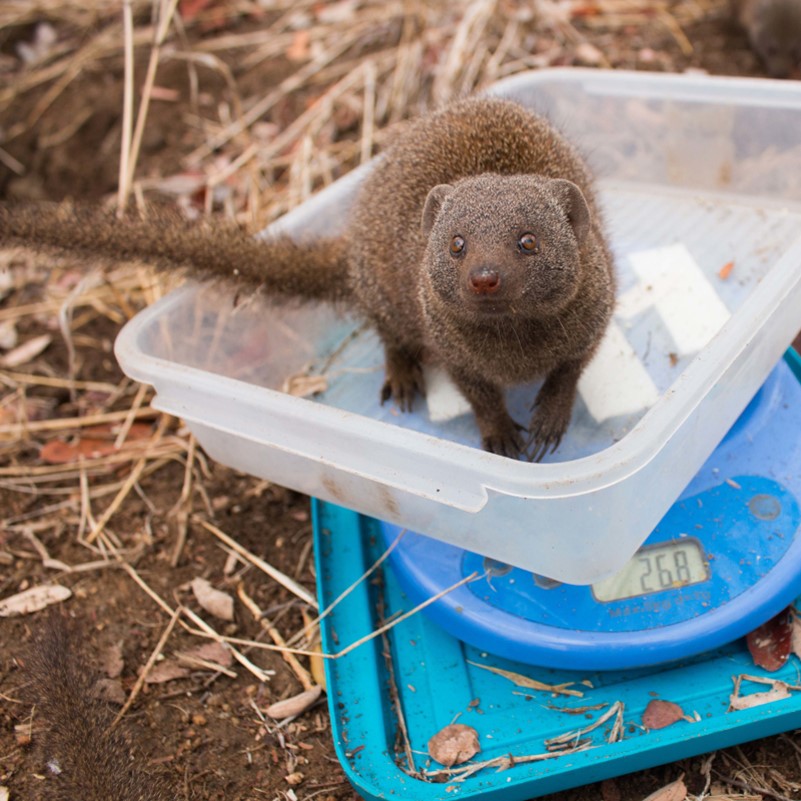In August, Biology Letters published an article on herring gulls responding to the gaze of humans. As this made headlines in several countries, we decided to revisit the article and ask the authors about all the attention they received.

Tell us about yourselves and what you are studying
I’m Madeleine Goumas, the lead author. After graduating with a degree in Zoology last year, I wanted to do a research project studying the behaviour of wild animals, and I found herring gulls particularly interesting because of their interactions with humans. I approached both Neeltje Boogert and Laura Kelley and they agreed to jointly supervise my postgraduate project. I was very interested in learning about whether herring gulls in urban areas use cues from human behaviour when foraging, so built my project around that. Since then, the herring gull project has gained a PhD student, another Masters student and two further undergraduate students, all doing exciting new work on herring gulls. Izzy Burns, an undergraduate student assigned to Laura Kelley, chose to join me on my research and I don’t think I would have been able to get anywhere near as much done without her!
What does your study tell us about herring gulls?
Our study provided evidence that herring gulls pay attention to the direction of human gaze and modify their behaviour accordingly. I think a lot of people intuitively recognised this already – many species find human gaze aversive – but it was good to be able to show this with the scientific method, and in the context of approaching food, which is a common occurrence for gulls in urban areas. Of course, not all gulls were perturbed by being watched, and we think this might be through being fed by humans, or because these gulls were particularly bold or hungry. We also showed that most gulls in the urban areas we surveyed appeared to be too nervous of approaching people, indicating individual differences in behaviour and that it is highly likely food-snatching is conducted by only a small subset of the urban gull population.
What made you initially submit to Biology Letters and Royal Society Publishing?
Neeltje Boogert and Laura Kelley are both Royal Society Research Fellows, so it seemed natural to choose a Royal Society journal. We are all very keen on making research open access, and their fellowships allow for that. Biology Letters has the right kind of format for a short study such as ours. I was very pleased that they suggested Biology Letters as it was the first journal I had ever properly read, back in my first term studying Zoology!
The reaction to the article has been phenomenal. Did you expect this, and what was it about your research that caught the public’s attention?
I don’t think any of us expected this level of interest. It’s my first ever paper and I didn’t really know what to expect, but I know that this sort of response isn’t usual. The timing of the release of the paper undoubtedly had an effect on how much attention it received: right in the middle of the summer holidays when people are going to the coast and eating outside, often coming across hungry herring gulls that have maybe two or three begging chicks to feed. I was shocked that it made worldwide news, but it seems that people in busy coastal regions everywhere have a shared experience, with whichever species of gull is local there.
Did you have any interesting outcomes out of the publicity generated?
Long lost acquaintances contacted me out of the blue. Even someone in Australia contacted my mum, who she hasn’t seen since the ’80s, after seeing my name printed in an article there. I think the strangest thing might be the political cartoons that people have printed in newspapers, based on our findings!
Did you intend for everyone to start staring at seagulls?
Of course, all the headlines said “Stare at seagulls to stop them eating your chips”. While the research did involve me “staring” at gulls as they approached a bag of chips, instead of intending to find the best way of deterring gulls, what we were really trying to show was that herring gulls pay attention to where you are looking. It is no use staring at a gull metres in front of you that is just minding its own business while you’re not paying attention to whether there are any behind you. We know from anecdotal reports that gulls tend to swoop in from behind, over people’s shoulders, and catch people by surprise, and we felt that our research somewhat corroborated this and gave an explanation as to why this might be the case.
What is next for you and your research?
I’m currently writing up my second paper on herring gulls using human cues to locate food. There are also two other projects currently going on. We want to see whether there is a difference in gaze aversion between adult and recently fledged juvenile herring gulls, whether they respond to eye or head direction specifically, and whether they are less risk averse in areas with higher human population density, and we are using flight initiation distance to test this. We are also doing observational work to quantify how often and where food-snatching occurs, and whether certain people are more likely to be targeted. In the near future, we would like to find out whether a diet high in fast food affects the growth and health of chicks: could urban environments be an ecological trap for gulls?
Biology Letters publishes short, high-quality articles, reviews and opinion pieces from across the biological sciences. Visit our website for more information on our article types or email our editorial office.





